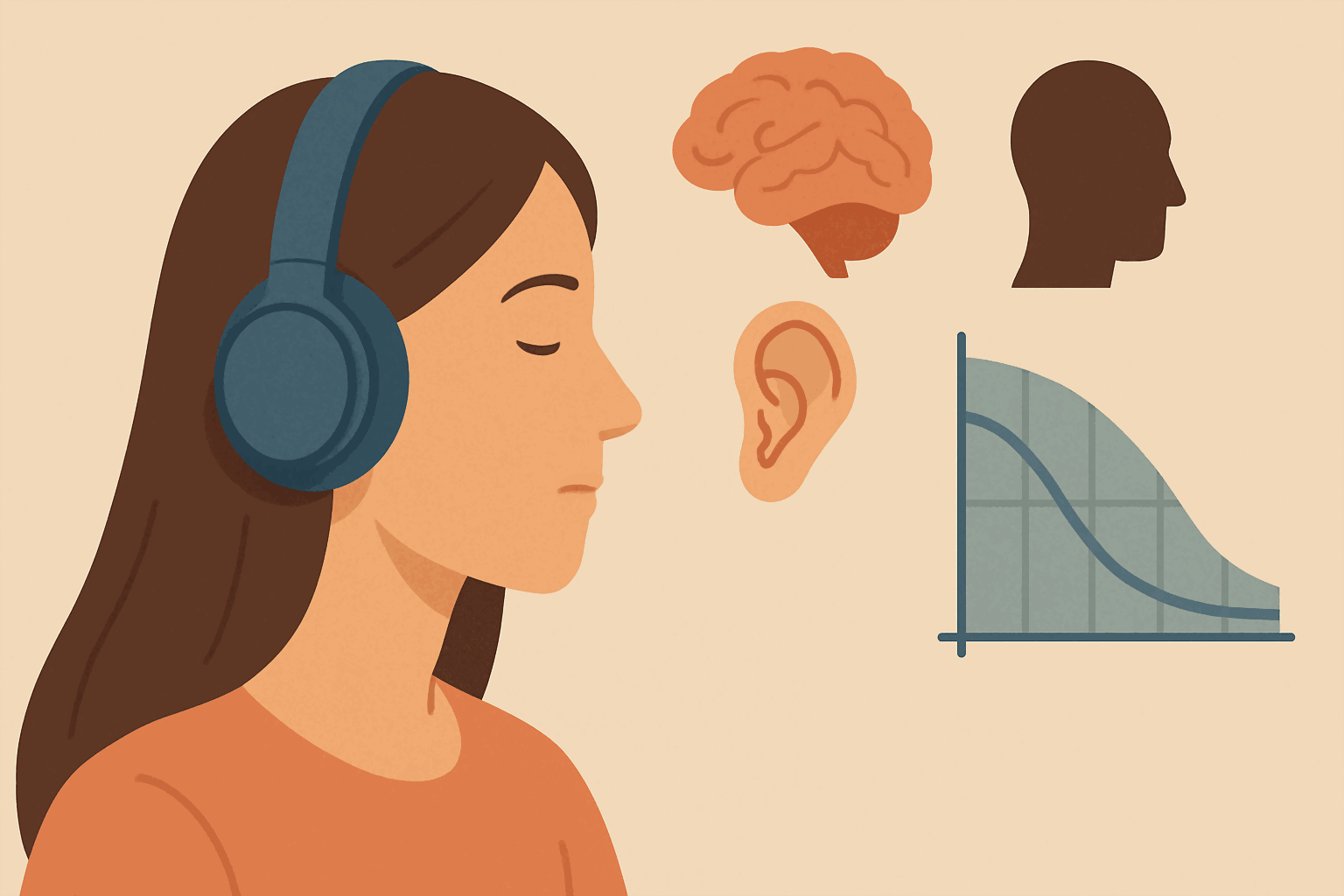
The Potential Neurological Risks of Prolonged Headphone Use
- Marcus Reed
- Health , Neuroscience , Auditory health , Brain health
- April 23, 2025
Table of Contents
The Neurological Risks of Prolonged Headphone Use
The widespread use of headphones isn’t limited to commuters; even health-conscious individuals rely on them during exercise. However, contrary to common perception, substantial scientific evidence reveals a link between frequent headphone usage and significant health risks, particularly concerning auditory health and potential neurological implications (adverse auditory outcomes).
Understanding Headphone-Induced Hearing Loss
Prolonged exposure to sound via headphones is a primary contributor to noise-induced hearing loss (NIHL), specifically sensorineural hearing loss. This type of hearing damage is often irreversible and has been increasingly linked to cognitive issues like dementia in older adults.
Sound levels exceeding 85 decibels (dB) – easily reachable even at moderate headphone volumes – can initiate the degradation of delicate hair cells within the cochlea. Crucially, unlike muscle tissue, these vital sensory cells do not regenerate. No amount of exercise, nutrition, or medication can restore them once damaged. This damage can also manifest as tinnitus (ringing in the ears).
Broader Neurological Consequences: Brain Health, Cognition, and Mood
The impact of hearing loss extends far beyond the ears, affecting overall brain health. Auditory deprivation can negatively influence critical neural structures, including the prefrontal cortex and the hippocampus. These brain areas are fundamental for higher-order cognitive functions – they are integral to processes like memory formation, complex thought, and spatial awareness, including memory and spatial navigation.
Increased Dementia Risk: Emerging research indicates a concerning correlation between early-onset hearing impairment, potentially accelerated by unsafe headphone use, and an elevated susceptibility to dementia later in life. Studies suggest the risk might increase 2- to 3-fold in affected individuals.
Link to Depression: Furthermore, the social isolation and communication difficulties that often accompany hearing loss are recognized as significant contributors to clinical depression. This highlights how a sensory deficit can cascade into serious mental health challenges.
Exercise and Headphone Use: An Added Risk Factor?
Using headphones, especially with loud, motivational music during exercise, presents unique concerns. Physical exertion increases intracranial pressure, which may exacerbate inner ear vascular fragility, potentially accelerating damage and contributing to neurodegenerative processes linked to cognitive decline.
Strategies for Safer Headphone Use & Mitigating Auditory Risk
Protecting your hearing requires conscious effort and adopting safe listening habits. Consider these practical recommendations:
- Volume Control: Limit headphone volume to no more than 60% of your device’s maximum output. If someone near you can hear your music, it’s likely too loud.
- Take Breaks: Practice the 60/10 rule: for every 60 minutes of listening, take at least a 10-minute break to allow your ears to recover.
- Exercise Caution: Avoid or limit headphone use during strenuous exercise due to the increased risks. Consider alternating days or using external speakers when possible.
- Consider Alternatives: Explore open-ear or bone conduction headphones, which don’t seal the ear canal and may reduce direct pressure on the eardrum and inner ear structures.
Minimizing headphone use, especially at high volumes and for prolonged durations, should be part of any health optimization strategy. Your hearing is a precious sense; unlike headphones, it cannot be easily replaced.
Disclaimer
The information provided on BioBrain is intended for educational purposes only and is grounded in science, common sense, and evidence-based medicine. It is not a substitute for professional medical advice, diagnosis, or treatment. Always consult a qualified healthcare provider before making significant changes to your diet, exercise routine, or overall health plan.
Tags :
- Headphones
- Hearing loss
- Dementia
- Cognitive decline
- Auditory health
- Neurodegeneration
- Sound exposure
- Noise induced hearing loss
- Brain health
- Safe listening
- Tinnitus